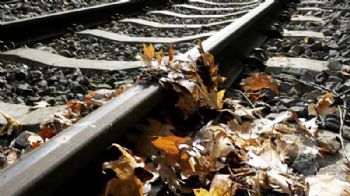
The University of Birmingham is developing technology that could benefit commuters who travel by train. Lee Chapman, Professor of Climate Resilience at the university, says he has been inspired by the emerging Internet of Things to develop “a range of innovative power, communication and sensing technology to aggregate real-time data”, in order to deal with leafy slush on train tracks in the autumn.
Funded by the Rail Safety and Standards Board, Mr Chapman has worked with Alta Innovations, the University of Birmingham’s technology transfer company, on a project he has dubbed AutumnSense.
This uses low-cost sensors to continuously measure the level of moisture on the railway line at potentially thousands of sites across the network. By linking this data with a leaf-fall forecast, operators can identify where and when the risk is greatest and improve the deployment of automated treatment trains that are used to clean the lines before the morning rush hour starts.
Professor Chapman’s team is now testing the next element of the concept — a low-cost method of counting the number of leaves remaining on the trees.
He said: “One of the major issues with road and rail safety is that hazardous conditions are usually highly localised.
“For remedial actions to be efficient, and demonstrate ‘best value’ for the taxpayer, resources should be deployed where they are needed, rather than in a blanket fashion.
“Even though leaf loss and damp conditions can largely be predicted, a windy, rainy night still causes havoc for commuters. We have run an initial trial of AutumnSense on a stretch of London Underground tracks that are above ground, and we are hoping to move quickly towards a fuller network-wide trial.”